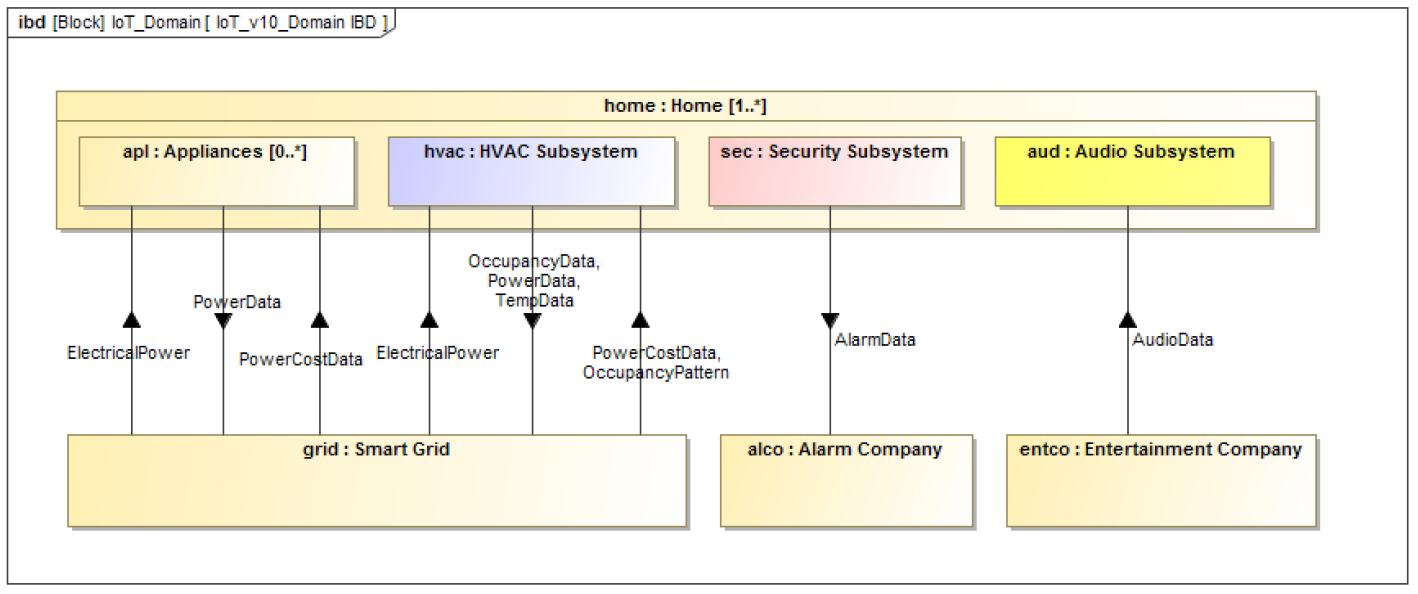This is the fourth in a series of technical notes describing the application of Model-Based Systems Engineering (MBSE) to the specification, design, procurement and evaluation of an Internet-of-Things (IoT) system. One advantage of an object-oriented modeling language such as SysML is that it becomes simpler to compose a model into a larger context. This section uses the SysML Smart Home model created in the first three sections and connects it to a Smart Grid energy system, which communicates energy pricing information to the Smart Home. Guided by this information and user preferences, the Smart Home shifts consumption to lower cost periods, in addition to the savings realized by intelligent room-by-room temperature control. The ParaMagic parametric solver tool uses stochastic modeling to predict sensitivity to low period energy costs and availability.
Smart Home Interconnection with External Systems
Monte Carlo simulation results of Smart Home/Smart Grid energy cost savings

Related Posts:
- Smart Home – Modeling IoT with SysML Part 5: Design, Simulation and System Architecture
- Smart Home – Modeling IoT with SysML Part 4: Smart Home to Smart Grid (This post)
- Smart Home – Modeling IoT with SysML Part 3: Procurement to Evaluation
- Smart Home – Modeling IoT with SysML Part 2: Functional Design to Procurement
- Smart Home – Modeling IoT with SysML Part 1: Requirements to Functional Design
 Intercax
Intercax Intercax
Intercax
